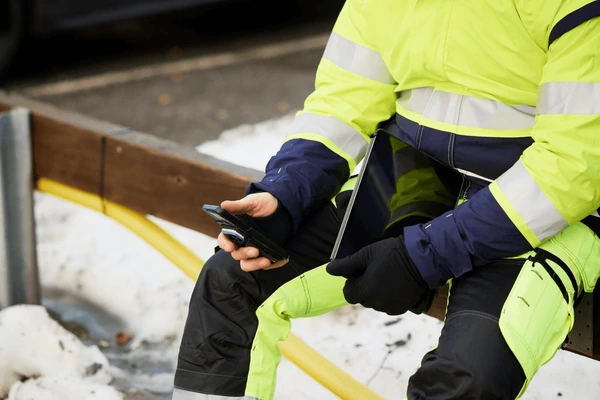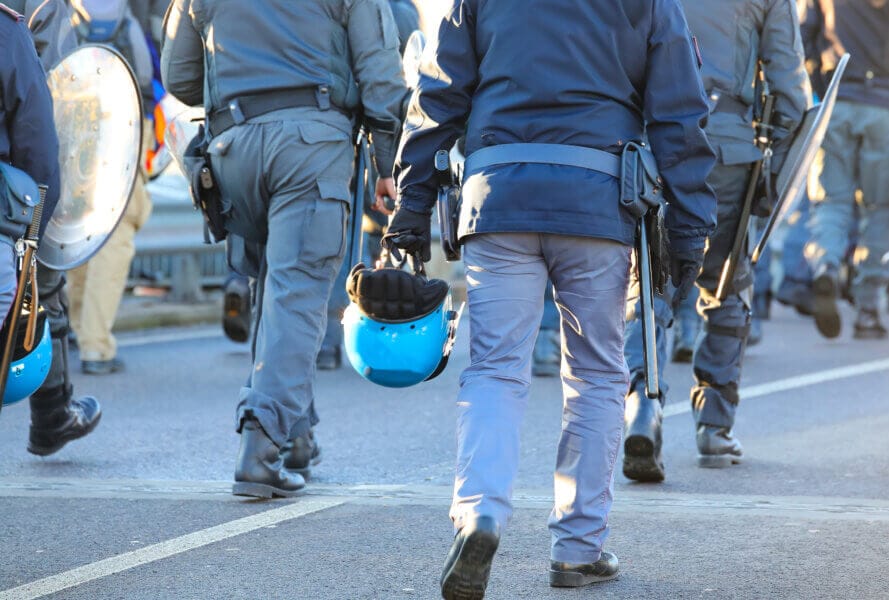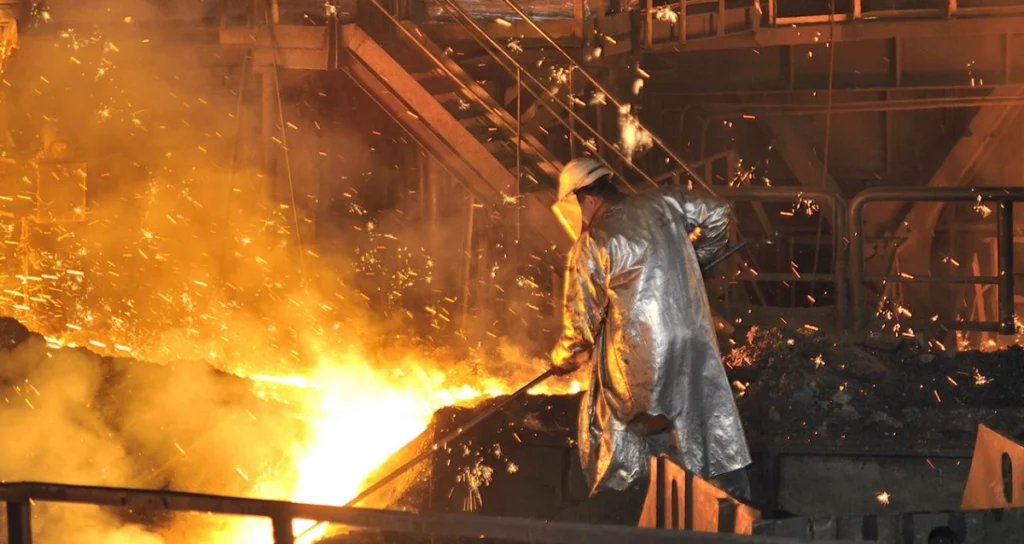
Before 2020, the global PPE and workwear supply chain felt… predictable. I could look at a production schedule from a factory in China, Vietnam, or Bangladesh and know almost to the day when it would be ready to ship. Freight rates barely moved outside peak holiday seasons. If something went wrong, it was usually an isolated hiccup—a late dye batch, a missing trim order—not a global problem.
Then COVID hit, and the entire system was shaken like a snow globe. Factories closed overnight. Ports backed up for months. Container prices skyrocketed to five times their normal rates. And for the first time in decades, many buyers realized just how fragile their sourcing strategy really was.
Now in 2025, the dust has settled… but the landscape has changed for good. The lessons from the pandemic are shaping every decision buyers make: where they source, how they split production, what they’re willing to pay for speed, and how much they invest in backup plans.
In this guide, I’m going to share what I’ve learned from working with PPE and workwear buyers through this transition—what’s working, what’s not, and how the smartest ones are staying ahead.
Post-pandemic PPE and workwear sourcing is defined by diversification, lead time management, and compliance assurance. Many buyers now follow a “China +1” model—sourcing most orders from China for speed and reliability while using a second country like Vietnam, Bangladesh, or Turkey for cost or risk hedging. Winning strategies include dual-supplier agreements, early production booking, safety stock, and pre-shipment compliance audits to avoid costly delays.
How the Pandemic Reshaped Supply Chains
The pandemic didn’t just cause temporary chaos—it exposed structural weaknesses in the way we source. Many of those weaknesses are still relevant today, and ignoring them is an expensive gamble.
Freight Volatility
Before 2020, I had clients shipping a 40-foot container from Shanghai to Los Angeles for under $2,000. By late 2021, that same container could cost over $15,000—if you could even find space on a vessel.
Even now, freight rates remain unpredictable. Geopolitical events, port strikes, or sudden demand spikes can add thousands to your shipping bill.
Example:
A US-based PPE distributor had budgeted $80,000 for freight on a major government contract in 2022. Rising fuel surcharges and congestion fees pushed the final cost to $110,000—wiping out most of their profit margin.
Factory Disruptions
Lockdowns in manufacturing hubs like China, Vietnam, and India taught buyers a hard truth: no matter how strong your supplier relationship, you can’t manufacture your way out of a closed border.
Example:
A Canadian workwear company that sourced exclusively from one Vietnamese factory saw their orders delayed by three months due to a local COVID outbreak. The factory was willing to work overtime later, but the missed summer delivery window meant the buyer had to discount the entire line.
Compliance Complexity
At the height of the pandemic, counterfeit and substandard PPE flooded global markets. In response, many countries implemented stricter import checks, which remain in place today.
Example:
In 2023, a European buyer’s shipment of safety boots was held at Rotterdam because the CE certificates couldn’t be verified quickly. Even though the boots were compliant, the two-week delay cost them a lucrative municipal tender.
Shift in Buyer Priorities
Before COVID, many procurement teams prioritized cost above all else. Post-pandemic, reliability and flexibility often rank higher—even if it means paying a premium.
Example:
A Japanese industrial uniform buyer now accepts a 5–7% higher FOB price from a Chinese supplier known for consistent on-time deliveries, instead of chasing lower prices from less predictable sources.
Post-Pandemic Sourcing Models
The supply chain shake-up has led buyers to rethink how they structure their orders. While there’s no one-size-fits-all answer, three main models have emerged.
1. Single-Country Focus
How it works: All production is based in one country—often where the buyer has the strongest supplier relationship.
Pros: Simple management, potential bulk cost savings, easier QC.
Cons: High vulnerability to local disruptions (lockdowns, strikes, political changes).
Real Buyer Note:
A Middle Eastern oil company still sources 100% of its workwear from a long-term Chinese partner. The relationship is so strong they can get urgent orders prioritized—but when a port closure delayed one shipment by 10 days, their entire distribution schedule slipped.
2. China +1 Model
How it works: Keep the majority of production in China for its speed, infrastructure, and compliance capabilities, but place 20–40% of orders in another country.
Pros: Balances cost, speed, and risk; easier to manage than full multi-country sourcing.
Cons: Slightly more complex coordination; different compliance requirements per country.
Real Buyer Note:
A US healthcare PPE supplier uses China for complex products like multi-layer gowns and Vietnam for simpler items like shoe covers. If one country faces delays, they can still deliver partial orders to clients.
3. Multi-Country Split
How it works: Spread production evenly across three or more countries.
Pros: Strong risk mitigation; can take advantage of regional cost differences.
Cons: High management workload; harder to maintain consistent quality.
Real Buyer Note:
A European uniform distributor splits orders across China, Turkey, and Bangladesh. This approach got them through the 2022 Suez Canal blockage without missing a single delivery—but their procurement team has doubled in size to handle the complexity.
Lead Time Considerations
Post-pandemic, lead times are no longer just about factory schedules—they’re tied to freight capacity, raw material sourcing, and even regulatory inspections. Here’s a realistic 2025 snapshot:
| Country | Average Lead Time | Strengths | Challenges |
|---|---|---|---|
| China | 45–60 days | Fast turnaround, strong compliance expertise | Freight volatility during peak seasons |
| Vietnam | 60–80 days | Competitive pricing, skilled for lighter garments | Limited capacity for complex PPE |
| Bangladesh | 75–90 days | Lowest labor costs for high volumes | Longer transit times to EU/US |
| Eastern Europe | 30–45 days | Speed to EU, smaller minimums | Higher labor costs |
Pro Tip: Lead time buffers are essential. If your client needs goods in 60 days, plan for 80. That extra margin can be the difference between an on-time delivery and a late penalty.
In the next section, I’ll break down the risk mitigation strategies I’ve seen work best, plus real examples of buyers using them to stay ahead despite the uncertainty.
Risk Mitigation Strategies
Post-pandemic, the most successful PPE and workwear buyers I work with have one thing in common: they plan for problems before they happen.
They’ve accepted that delays, shortages, and price swings are part of the new normal—and they build resilience into their sourcing strategy.
1. Dual-Supplier Agreements
Having two approved suppliers for each key product means you can pivot fast if one is delayed.
- Example: A German PPE distributor sources safety gloves from both China and Malaysia. When a power rationing policy slowed Chinese production, they immediately ramped up Malaysian output to meet deadlines.
- Tip: Negotiate standby capacity with your backup supplier—it might cost a little more, but it’s cheaper than missing a contract.
2. Compliance Audits
Customs holds can destroy your delivery schedule. A pre-shipment compliance audit ensures documents and product specs match client and regulatory requirements.
- Example: A Canadian workwear importer runs third-party audits in both China and Vietnam before goods leave port. This cut their customs delays from 12% of shipments to less than 1%.
3. Inventory Buffers
Maintaining safety stock for your top SKUs is like buying insurance against disruption.
- Example: A US hospital supplier keeps three months of PPE inventory in a domestic warehouse. During a 2024 typhoon that closed their main Asian port, they fulfilled orders from stock without clients even noticing.
4. Flexible Logistics
Mixing freight methods can save both time and money when routes are congested.
- Example: An Australian uniform buyer uses sea freight for 80% of volume and reserves space on monthly air freight for urgent replenishment orders. The extra cost on small air shipments is offset by keeping big contracts happy.
Regional Shifts in PPE & Workwear Sourcing
The sourcing map has been redrawn. Let’s look at how different buyer markets have adapted since the pandemic.
United States
Priority: Speed + compliance over lowest price.
- Case: A Midwest safety gear distributor now pays 8% more to source high-spec EN-certified PPE from China rather than risk cheaper but uncertified goods from elsewhere. This ensures they meet OSHA standards without last-minute scrambling.
European Union
Priority: Compliance and traceability, accelerated delivery to meet tender deadlines.
- Case: A Spanish importer moved part of its reflective jacket production from China to Turkey, halving shipping times and speeding up certificate verification.
Japan
Priority: Stability and long-term supplier relationships.
- Case: A Tokyo-based buyer keeps multi-year contracts with the same Chinese and Vietnamese factories, even at slightly higher cost, to ensure consistent fit and quality.
Middle East
Priority: Climate-specific PPE and delivery reliability.
- Case: A UAE oilfield service provider diversified suppliers to include Pakistan for flame-resistant coveralls and Turkey for lighter, breathable uniforms to suit different work sites.
Common Procurement Mistakes
Some mistakes I see repeated over and over—especially by buyers still working with pre-pandemic assumptions:
-
Over-Reliance on a Single Country
If that country faces disruption, you’re stuck—no matter how good the price. -
Ignoring Freight Market Trends
Failing to lock in rates can double your shipping costs in busy seasons. -
Skipping On-Site Inspections
Small defects become big problems when clients reject entire shipments. -
Not Synchronizing Fabric and Trim Orders
Factories can’t sew garments if the reflective tape or zippers are still on the water.
Cost-Benefit Snapshot
| Scenario | Single Supplier Model | Diversified Model | Annual Savings |
|---|---|---|---|
| Production stoppage (4 weeks) | $500,000 loss | No stoppage | $500,000 |
| Freight rate surge (40-foot container) | $18,000 | $14,000 (split routes) | $4,000 |
| Certificate non-compliance fine | $20,000 | $0 | $20,000 |
| Lost tender due to late delivery | $250,000 | Delivered on time | $250,000 |
Buyer FAQ
Q1: Is China still the best for PPE sourcing?
A: For high-spec PPE, yes—capacity, expertise, and compliance support remain unmatched. But having a secondary supplier reduces risk.
Q2: How can I reduce logistics delays?
A: Book freight early, use experienced forwarders, and consider splitting orders across ports.
Q3: Should I pay more for faster lead times?
A: If late delivery penalties are significant, the premium usually pays for itself.
Q4: How do I manage quality across multiple countries?
A: Use the same QC checklist and inspection partner in every sourcing location.
Procurement Checklist
- [ ] At least two qualified suppliers for each key product
- [ ] Pre-booked production slots for peak seasons
- [ ] Verified compliance certificates before production
- [ ] Safety stock for top-selling SKUs
- [ ] Freight rates locked in advance
- [ ] Alternate logistics routes confirmed
- [ ] Standardized QC process across all suppliers
- [ ] Aligned fabric and trim sourcing schedules
Conclusion
The pandemic taught the PPE and workwear industry a hard lesson: the cheapest supply chain isn’t always the best supply chain. The winners in 2025 are buyers who invest in resilience—splitting orders, auditing compliance, holding inventory buffers, and securing flexible logistics options.
If you can deliver on time, in full, and with the right paperwork, you’ll be the buyer your clients can’t afford to lose.
📩 Need reliable, EN-compliant PPE and workwear sourcing?
Email: [email protected]
🌐 www.workwearsolutions.net
Zion Zhang
Recent Posts
 Antimicrobial & Self-Cleaning Fabrics: Hygiene in Food, Pharma & Healthcare2025年9月20日In industries where hygiene is non-negotiable—food […]
Antimicrobial & Self-Cleaning Fabrics: Hygiene in Food, Pharma & Healthcare2025年9月20日In industries where hygiene is non-negotiable—food […] Sustainable & Circular Workwear: Meeting ESG Demands in 20252025年9月20日Workwear has always been about safety and functionality, […]
Sustainable & Circular Workwear: Meeting ESG Demands in 20252025年9月20日Workwear has always been about safety and functionality, […] Cooling Fabrics for Hot Climates: Innovations for Africa & Middle East2025年9月20日Step into a construction site in Dubai at noon or a highway […]
Cooling Fabrics for Hot Climates: Innovations for Africa & Middle East2025年9月20日Step into a construction site in Dubai at noon or a highway […] Smart Workwear: How IoT and Sensors are Changing Safety Gear2025年9月20日Walk onto a modern construction site, an oil rig, or even a […]
Smart Workwear: How IoT and Sensors are Changing Safety Gear2025年9月20日Walk onto a modern construction site, an oil rig, or even a […] Workwear for Central Asian Mining & Energy Projects2025年9月18日From the coal mines of Kazakhstan to the oil fields of […]
Workwear for Central Asian Mining & Energy Projects2025年9月18日From the coal mines of Kazakhstan to the oil fields of […] Workwear for South American Logistics & Warehousing: Comfort and Safety in Long Shifts2025年9月16日South America’s logistics and warehousing industry is […]
Workwear for South American Logistics & Warehousing: Comfort and Safety in Long Shifts2025年9月16日South America’s logistics and warehousing industry is […]
CONTACT US
- Feel free to contact us any time. We will get back to you as soon as we can!
- +86-17330061805
